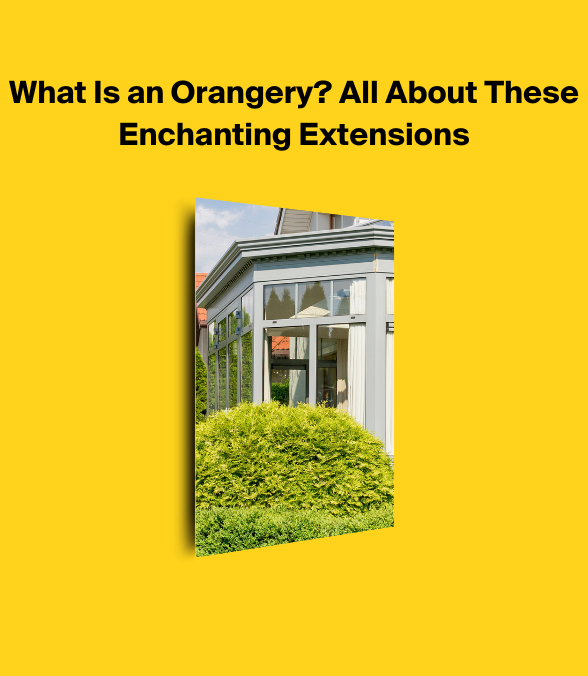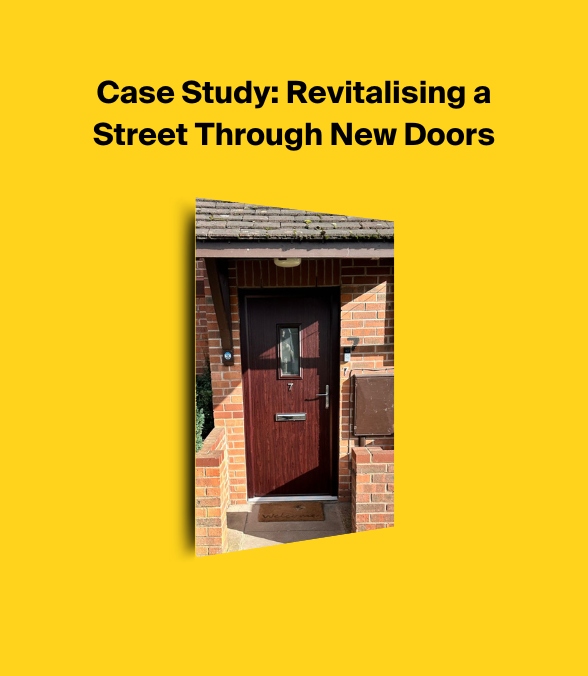Orangery Extensions - What is an Orangery Extension?
What is an orangery extension? Simply put, it’s a sophisticated home extension, rooted in historic citrus protection, today providing a light-enriched space for various activities. This distinctive structure marries solid walls with glass expanses under a standout roof lantern.
Learn about its evolution, design, and how it can enhance your living experience without dominating the article’s rich details.

Build your door today!
Get a Quote
All About Orangeries - Overview

- An orangery combines the elegance of traditional conservatories with modern architectural features, creating a cosy, light-filled, and versatile space that can serve multiple functions while reflecting the opulence of its owner.
- Orangeries provide structural integrity and longevity through robust brick or stone construction, advanced glazing techniques, and a distinctive flat roof with a central roof lantern, thus offering a blend of aesthetic charm and practical benefits, such as enhanced thermal efficiency and natural light absorption.
- Investment in an orangery can significantly increase a home’s value up to 15%, providing a long-term financial return in addition to lifestyle enhancement, and often qualify for permitted developments without full planning permission in the UK, though conditions apply.
Defining the Orangery
The allure of an orangery lies in its unique combination of design elements that bring together the past and the present.
Characterised by a robust brick base, a refined flat perimeter roof, and a stunning central roof lantern, the orangery offers a perfect fusion of traditional conservatory aesthetics with modern architectural innovations.
Unlike the typical glass structure of a conservatory, an orangery boasts:
- a solid foundation
- a lower ratio of glass to solid walls, providing a cozy and private atmosphere
- a central roof lantern that ensures the space is awash with natural light.
Origins and Evolution
The concept of orangeries transports us back to the opulent Renaissance gardens of Italy, serving as a historical journey. The earliest known orangery, built in 1545, was a sanctuary for citrus trees, employing open fires for heating.
As symbols of wealth and prestige, orangeries flourished among the affluent in France, Germany, and the Netherlands, with the iconic Versailles Orangerie accommodating thousands of orange trees.
Over centuries, the architectural design of orangeries has evolved, embracing influences from Holland and expanding into the diverse and modern conservatories we see today.
Purpose and Function
Orangeries, initially developed to protect delicate citrus trees and exotic plants from harsh climates, have evolved into versatile sanctuaries.
They became ornate extensions of the main house, boasting large triple-hung windows that maximised sunlight and warmth, and employed insulation strategies like wooden shutters to nurture a variety of plant species.
Gradually, the orangery evolved into a status symbol, reflecting the opulence of its owners, and today it serves as a dining area, entertainment space, or garden room, still nurturing its botanical roots while offering a luxurious living space.
Orangery Design and Construction
Blending classic charm with modern efficiency, contemporary orangeries stand as architectural wonders. They incorporate:
- Traditional brickwork
- Large glass windows
- Advanced glazing techniques
- Slim hardwood frames that allow for expansive use of glass
- Simple yet elegant roof lanterns
These structures create an ambience of old-world elegance paired with contemporary performance, basking in natural light and deviating from the complexity of traditional Victorian designs.
Moreover, the foundation of the orangery, laid upon solid concrete, ensures both structural integrity and longevity, offering homeowners a luxurious yet durable home extension with quality roof construction.
Flat Roof and Glazed Structure
Featuring a distinctive flat roof and a central glass roof, also known as a fully glazed roof, an orangery provides design versatility coupled with practical advantages.
The solid perimeter of the flat roof supports internal detailing like cornices, adding to the aesthetic appeal while the glazed roof floods the space with light. In contrast to a pitched roof, the flat roof design offers a unique and modern appearance with the added benefit of solid roofs.
Modern orangeries offer the following features:
- Advanced thermal technology within the flat roof structure
- Accommodating integrated lights and speakers
- Achieving a perfect blend of energy efficiency and modern convenience.
Stone and Brick Orangery Elements
The solidity of an orangery is vivid in its brick or stone elements, which not only provide robust construction but also a timeless appeal that distinguishes it from the ephemeral look of a conservatory.
Today’s orangeries often use engineered bricks and composite stone, offering a wide array of colours and finishes that preserve the structure’s solid and insulated nature while allowing for personalised aesthetic choices.
Large Glass Windows and Natural Light
Designed to bask in sunlight and maximise natural light, modern orangeries often boast south-facing windows and solid north-facing walls for efficient sun capture. The architectural harmony of a brick structure and large glass windows ensures both solid insulation and an abundance of light, creating an inviting and energy-efficient interior space.
In colder months, the large windows of an orangery contribute to interior heating, while options like solar-control glass provide climate control and UV protection, enhancing the orangery’s role as a year-round sanctuary.

Build your window today!
Get a Quote
Comparing Orangeries and Conservatories
If you’re contemplating adding a glass extension to your home, it’s worth understanding the differences between a conservatory and an orangery. Orangeries are defined by their flat roof with a lantern and brick or stone construction, offering a more substantial and insulated structure than the predominantly glass conservatories, which feature pitched roofs and create a glass enclosure.
While conservatories tend to invite more natural lighting due to their conservatory roofs, the design of orangeries allows for a sophisticated blend of artificial and natural lighting, providing an enhanced nighttime ambience.
Design and Aesthetics
With regards to design and aesthetics, orangeries serve as a flexible canvas adaptable to various styles, seamlessly aligning with and enhancing a home’s existing aesthetic.
With a palette of appealing colours and the ability to complement both modern and traditional homes, an orangery not only adds functional living space but also significantly boosts the visual and kerb appeal of a property.
Thermal Efficiency
Beyond their visual appeal, orangeries also outperform conservatories in terms of thermal efficiency. Their benefits include:
- Their brick structure and advanced thermal technology make an orangery warmer and more energy-efficient
- They allow for comfortable use throughout the seasons
- They can be used for a variety of activities
The inclusion of features such as triple glazing, solar control glass, and roof glazed in large windows further enhances the orangery’s thermal efficiency, making it a practical choice for those seeking a cosy year-round living space.
Cost and Value
Investing in an orangery extension often involves a greater financial commitment than a conservatory due to the higher quality materials and construction complexities. While the range in cost of conservatories is from £15,000 to £35,000, orangeries can cost between £15,000 and £45,000, with bespoke hardwood designs starting at around £50,000.
Despite the higher initial outlay, the average cost per square meter for an orangery is indicative of its potential to deliver significant long-term value; an orangery can add up to 15% to a property’s value, compared to around 5% for a conservatory.
This positions the orangery not just as a home extension but as a wise investment that can pay dividends in both lifestyle enhancement and financial returns.
Planning Permission and Building Regulations

If you’ve been dreaming of adding an orangery to your home, you’ll be pleased to know that in the UK, orangeries often qualify as permitted developments, requiring no full planning permission.
However, some conditions must be met, such as size and height limitations relative to the house and property boundaries.
It’s vital to check whether planning permissions for extensions are necessary, as they might be mandatory if the property has previous extensions, is listed, or is on designated land.
Furthermore, building regulations are separate considerations that ensure compliance with updated guidelines for aspects such as overheating and ventilation.
Customising Your Orangery or Extension
More than just an extension, an orangery provides the opportunity to craft a customised space reflecting your personal style and lifestyle. Whether you envision a grand dining room, a tranquil garden room, or a vibrant kitchen extension, an orangery offers high ceilings and architectural grandeur that can be tailored to your desires.
Choosing materials that harmonise with your existing home is key for architectural continuity, as this ensures seamless integration of your new orangery or extension with the main structure, thereby enhancing your property’s aesthetic and functional attributes.
Interior Design Ideas
The orangery presents limitless possibilities for personalisation. Here are some orangery ideas to consider:
- Contemporary design schemes with soft neutral tones and bright accents can create a sophisticated and relaxing atmosphere.
- An orangery can be shaped into a multifunctional family room that harmoniously combines cooking, dining, and relaxation spaces, connecting the interior with the garden’s natural beauty.
- By integrating a kitchen, adding a bar, or using the space as an impressive entrance hall, an orangery can become the heart of your home where memories are made.
Furthermore, the ambience within an orangery can be enhanced with natural light and features such as internal pelmets with integrated LED lights or speakers for a room-like atmosphere.
Outdoor Integration
An orangery’s true magic lies in its capacity to blur the lines between indoor and outdoor spaces. Bi-fold doors can provide a panoramic connection to the garden, creating a space that can be as open as the sky or as intimate as a private retreat, depending on your mood.
The choice of versatile furniture and practical flooring options, along with a botanical theme, can create a seamless transition between your home and the natural world outside, establishing a visual harmony that extends the living space into the garden.
An orangery designed with thoughtfulness towards natural surroundings offers a restorative retreat, allowing inhabitants to immerse themselves in the tranquillity of nature while within the comfort of their homes.
Extension Orangery - Final Verdict
Orangery extensions stand as a testament to timeless elegance and modern functionality. From its historical roots as a symbol of wealth to its contemporary role as a versatile home extension, the orangery has proven to be more than just a space—it’s a lifestyle enhancement that merges the beauty of nature with the comforts of home.
With its robust construction, thermal efficiency, and potential to add significant value to your property, an orangery is not merely an addition but an investment in your home’s future.
As you consider the possibilities, remember that an orangery can be the canvas upon which you paint your most cherished moments, surrounded by the warmth of sunlight and the allure of nature.
Frequently Asked Questions
What is the difference between an orangery and a conservatory?
In conclusion, the main difference between an orangery and a conservatory is the type of roof they have. Orangeries have a lantern roof and resemble traditional single story extensions, while conservatories have a fully glazed roof and resemble airy greenhouses.
Why is a room called an orangery?
An orangery is called so because traditionally, it was used to grow orange trees in grand period homes, with its solid pillars providing shelter and large glass windows allowing the sun's warmth to cultivate the plants.
What is the difference between an extension and an orangery?
An orangery is a hybrid of a conservatory and a traditional extension, featuring brick pillars and a raised roof for natural light, while extensions consist of insulated walls and a flat roof.
Is an orangery extension cheaper than a conservatory?
No, orangeries are more expensive than conservatories due to their construction, although the price could depend on the type of conservatory.
Are orangeries energy efficient?
Orangeries are energy efficient due to their design, incorporating solid brick walls and advanced glazing to retain heat and provide comfortable living spaces year-round.
A brick orangery may have a high initial cost, but it can actually help you save money on your energy bills by retaining heat better.

Build your door today!
Get a Quote









